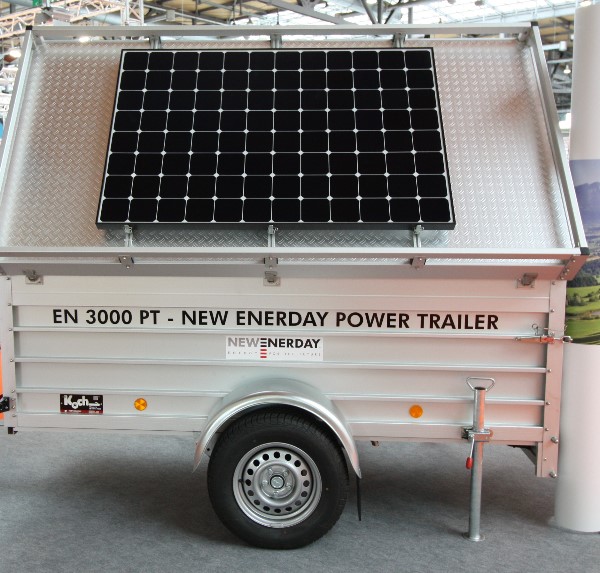Calculate phovoltaic systems prices - Calculate Now
Photovoltaic systems power and dimensions
Photovoltaic systems, or "PV systems" for short, are solar systems whose converted electricity can cover the needs of a single-family home. The photovoltaic power required for this purpose is expressed in kilowatts peak (kWp). The maximum possible power output under standardized conditions is defined by this peak number. From the manufacturer's side, this power is also shown as nominal power. The nominal power is influenced by various factors and can be optimized by certain measures.
First and foremost, this includes the light irradiation and the angle of incidence of the light as well as the temperature of the solar modules. For geographical reasons, these factors can be very different in different places, as in the south of Germany the solar radiation is higher than in the north of Germany.
The nominal power of a PV system can be optimized by integrating more solar cells of higher quality in modules. If we assume that the four inhabitants of a single-family house consume about 4000 kilowatt hours per year and the solar modules on the roof of the house with an assumed area of 10 square meters generate one kilowatt peak (1000 watts), then a roof area of 40 square meters is required. Compared to petroleum or natural gas, 1000 kilowatt hours means 100 liters.
What a complete system consists of
Nowadays, there are mainly 2 different concepts on the basis of which PV systems are designed.
1. grid parallel operation = feed in and get reimbursed
In grid-parallel operation, the PV system feeds the converted electricity into the public grid and one receives the corresponding remuneration. Thus, it can be assumed that most systems on unused houses or barns run in grid operation because the remuneration for the electricity is higher than the cost of drawing the electricity from the grid for supply.
The main components of grid-connected operation are:
- solar generator, consisting of the solar modules
- generator junction box
- Inverter
- Feed-in meter
2. stand-alone systems = produce for own consumption
In this variant, the focus is on your own electricity needs, because there is no public supplier nearby, for example in mountain huts or boats. In this way, you can operate a photovoltaic system as an island system. Here you store the electricity temporarily in accumulators in order to use it when needed.
The components of the photovoltaic system in island mode are:
- Solar generator, consisting of the solar modules
- Generator junction box
- Inverter
- Charge controller
- Battery
Installation requirements for buildings
In order to guarantee the expected lifetime of a PV system of 20 years and more, the roof and possibly the building must be subjected to a structural analysis, as not only the load of the system, but also wind effects and possible snow loads must be taken into account.
Modules, racks and mounting materials as well as roof connections must be selected according to the geographical location of the object and the existing standards on site. In general, the rule of thumb is that the higher the sum of the loads, the more stable the mountings and the load-bearing capacity of the roof.
State photovoltaic subsidies
The promotion of solar systems is regulated by the Renewable Energy Sources Act (EEG). The most advantageous method to take advantage of the solar system subsidy is to install a grid-connected system.
This system is able to feed surplus electricity produced into the public grid. For each kilowatt hour fed into the grid, the customer receives a fixed amount of compensation. The amount of compensation can fluctuate due to legislation, and the duration is fixed at 20 years.
Start of quote EEG 2011 "The feed-in tariff will be reduced by 13 percent as of 01.01.2011. It amounts to 28.74 cents / kWh for photovoltaic systems up to 30 kWp. For self-consumption up to 30 percent consumption share, 12.36 cents / kWh is paid. Above that, it is 16.74 cents / kWh. The feed-in tariff for large photovoltaic systems over 30 kWp is staggered again.
[ALT From 2012, there will be a variable basic degression of 9 percent. This will be increased or decreased, depending on the addition of photovoltaic systems in a previous 12-month period." end of quote]
PV Investment & Investors
As explained above, depending on the model of the PV system, the investors are mainly private or commercial, as this area of electricity feed-in has been downgraded in terms of its promotion, but still remains attractive to both groups of investors due to falling system prices.
Costs of a photovoltaic system
The following costs for a PV system can be used as an example:
- PV module 400 € - 450 € per m² (75 % - 80 % of the total costs)
- Planning of the plant 20 € per m² (5 % - 7 % of the total costs)
- Installation 200 € - 300 € per kWp
- Inverter incl. remote monitoring 250 € - 350 € per kWp
- Elevation depending on type of installation 300 € - 400 € per kWp
- Cabling DC side 55 € per kWp
- Cabling AC side 40 € per kWp
- Miscellaneous (cable ducts, penetrations, lightning protection, etc.) 100 € per kWp
These prices are exemplary and can vary depending on the provider, a price comparison should be made in any case.
PV installation time and effort
Due to the compact design of the solar modules, roof installation can proceed quite quickly, but poor work preparation or adverse conditions can delay the progress of the installation work. As an estimate, with a well-rehearsed team of 3 installers and a roof area of 20 square meters to be installed, 7 hours to commission the system is realistic.
Optimal site selection
An optimal yield of sunlight is achieved by orienting the modules to the south, not allowing shading by objects and ensuring a roof pitch of no more than 30 degrees. Since the sun does not provide solar energy every day, batteries can be used to store the energy generated on sunny days.
PV systems in operation, control, billing, maintenance, repair costs, service life
Maintenance costs are usually low in the first few years, as no maintenance is required. After that, however, minor repairs to the technology or maintenance may be required, such as cleaning the modules.
One calculates for the running costs altogether approx. 1% of the plant value per year. A PV system is built with a functional expectation of 20 years.
The billing of the PV system is based on the EEG (Renewable Energy Sources Act) and the respective valid compensation rates when it is fed into the grid.
Photovoltaic module types
1. monocrystalline silicon solar cells.
The Czochralski process pulls molten silicon into an elongated single crystal and cuts it into slices. Monocrystalline silicon solar cells are characterized by a uniform, smooth surface as well as broken corners.
2. multicrystalline silicon solar cells
In this type of solar cell, molten silicon is poured into angular molds to prevent single crystal formation. Then the coarse-grained blocks are cut into slices. The multicrystalline silicon solar cells can be recognized by the irregular and coarse-grained surface on which the crystals are clearly visible.
3. amorphous silicon solar cells
In this process, the silicon is deposited from the gas phase onto a carrier, which is often glass, as a thin layer. Amorphous silicon consists of disordered silicon atoms, which is why a crystal structure is not visible.
Performance and cost efficiency of the different types
The different types of solar cells have different efficiencies. The monocrystalline silicon solar cell achieves an efficiency of 15 to 18.5 degrees under real conditions compared to 23.3 degrees under laboratory conditions.
The Multicrystalline Silicon Solar Cell achieves an efficiency of 12 to 14 degrees under real conditions versus 17.5 degrees under laboratory conditions.
The Amorphous Silicon Solar Cell achieves an efficiency of 5 to 8 degrees under real conditions versus 11.5 degrees under laboratory conditions.
The production of multicrystalline solar cells is less costly, resulting in modules with this cell type being cheaper and more widely available.
Future technical developments and potentials
The predominant interest of research and development in the next few years is focused on increasing the efficiency. Thus, in the near future, the aim is to achieve an efficiency of 40 degrees, which will only be achievable with an improved solar cell.
Here, the focus is particularly on the further development of thin-film technology, especially amorphous, microcrystalline and micromorphous silicon solar cells, CIGS and CdTe solar cells, and organic and dye solar cells.
Lifetime, optimal operating conditions
In Germany, a solar system achieves the maximum yield when the PV system is oriented directly to the south with an angle of inclination of 30°. If an orientation is only possible between southwest and southeast, one still achieves 95% of the possible yield. In order to ensure an optimal position of the modules at any time, tracking systems can be used. Most of the power losses are caused by shading. Furthermore, the temperature of the solar modules plays a significant role in the power output, cooler cells work more efficiently than hot cells, which is why green roofs are ideal for roof mounting, among other things. At present, PV systems are expected to have an average operating life of between 20 and 25 years.
Manufacturing costs and energy balance of common PV modules
The energy payback time is between 3 and 5 years, depending on the module type, quality and manufacturer. Within the operating period of 20-30 years, a PV system generates 4 to 10 times the energy that was required to manufacture the system. From this it can be concluded that a photovoltaic system has a positive energy balance.
Price development in the last decade and forecast
The prices for PV systems have dropped significantly in the last decade. Standard market values for current system costs are between 4 and 8 euros per watt peak, depending on the size of the system for grid-connected systems. The share of module costs is between 50 and 60%, that of the inverter is 10%.
The remaining shares are accounted for by substructure, assembly, planning, distribution and the like. Undoubtedly, system costs will be further reduced by more efficient manufacturing processes and mass production.
Manufacturing countries, main exporters and importers
This point cannot be narrowed down exactly, as all industrialized nations distribute PV systems with well-known or unknown manufacturers. Representative countries are China or Russia, but also Switzerland, Germany and Austria offer very high quality PV systems.
Topics: building & Living & Energy Technology & Building Services & Solar Technology



